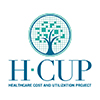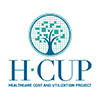National Healthcare Quality and Disparities Report
Latest available findings on quality of and access to health care
Data & Analytics
- Data Infographics
- Data Visualizations
- Data Tools
- Data Innovations
- All-Payer Claims Database
- Consumer Assessment of Healthcare Providers and Systems (CAHPS®) Program
- Healthcare Cost and Utilization Project (HCUP)
- Medical Expenditure Panel Survey (MEPS)
- National Healthcare Quality and Disparities Report Data Tools
- Network of Patient Safety Databases
- AHRQ Quality Indicator Tools for Data Analytics
- Surveys on Patient Safety Culture
- United States Health Information Knowledgebase (USHIK)
- Data Sources Available from AHRQ
Data Resources
Filter by Topic
- Access to Care (4)
- Adverse Events (1)
- Ambulatory (2)
- By Payer (2)
- By State (3)
- Children (3)
- Children (1)
- Children/Adolescents (1)
- Clinicians (1)
- Community Pharmacies (1)
- Costs (2)
- Costs & Charges (1)
- Coverage (4)
- Data (3)
- Discharges by State (1)
- Disparities (2)
- Elderly (1)
- Element Definitions, Values & Information Models (1)
- Emergency Departments (4)
- Employer (1)
- (-) Estimates (State & Metro) (1)
- Expenditures & Projections (3)
- Health (5)
- Health Care (8)
- (-) Health Conditions (5)
- Health Plans (3)
- Health Systems (1)
- Hospital Characteristics (2)
- Hospitalizations (10)
- Household Spending (1)
- Injuries Seen (1)
- Inpatient Care (1)
- Insurance (9)
- Medicaid (1)
- Medicare (1)
- Men (1)
- Mental Health (3)
- Mental Health and Substance Abuse Disorders (2)
- Obesity (1)
- Opioids (1)
- Patient Experience (1)
- Payment Sources (1)
- Premiums (1)
- Prescription Drugs (1)
- Preventable (1)
- Private (1)
- Quality (3)
- Readmissions (2)
- Safety Culture (1)
- SCHIP (1)
- Spending (2)
- State (1)
- Surgery (3)
- Systematic Review (1)
- Systems - Characteristics (1)
- Uninsured (2)
- Use (3)
- Visits (2)
- Women (2)
Data Resources
The Agency for Healthcare Research and Quality (AHRQ) offers practical, research-based tools and other resources to help a variety of health care organizations, providers and others make care safer in all health care settings.
Results
1-6 of 6 Resources displayed
These reports provide information on various aspects of utilization and spending for hospital-related treatment of mental and substance use disorders.

These HCUP Statistical Briefs provide statistics about mental health and substance abuse conditions (diagnoses) treated in U.S. hospitals. Topics include depression, drug abuse, and eating disorders.

The MEPS Household Component fields questionnaires to individual household members to collect nationally representative data on demographic characteristics, health conditions, health status, use of medical care services, charges and payments, access to care, satisfaction with care, health insurance coverage, income, and employment.

In MEPS, a medical condition is defined as a physical or mental health problem that can be identified by a health care professional by examining a patient and using tests. Certain conditions have been designated as priority conditions (PRIOLIST=1) because of their prevalence, expense, or relevance to policy. Some are long-term, life-threatening conditions, such as cancer, diabetes, emphysema, high cholesterol, hypertension, ishemic heart disease, and stroke. Others are chronic manageable conditions, including arthritis, and asthma. Conditions data were collected from household respondents during each round as verbatim text and coded by professional coders using the International Classification of Diseases, Ninth Revision.

The MEPS- Household Component provides information on the body mass index for both children and adults. Using this measure, analyses can be performed on obesity issues.

MEPS provides state-level health insurance data for employer-sponsored plans through the MEPS-Insurance Component. Beginning in 2004, MEPS-IC also provides a subset of these data for selected metropolitan areas.



